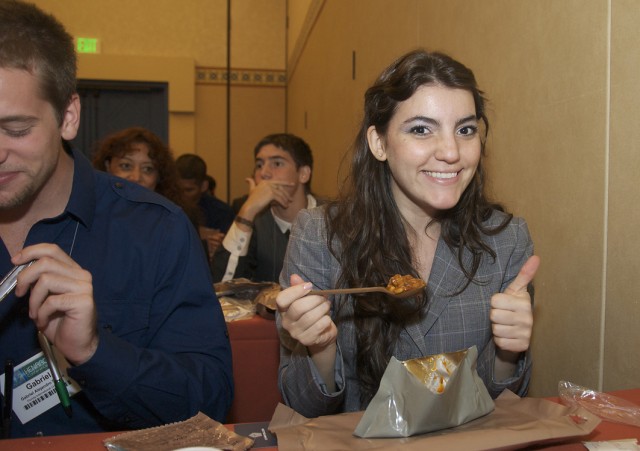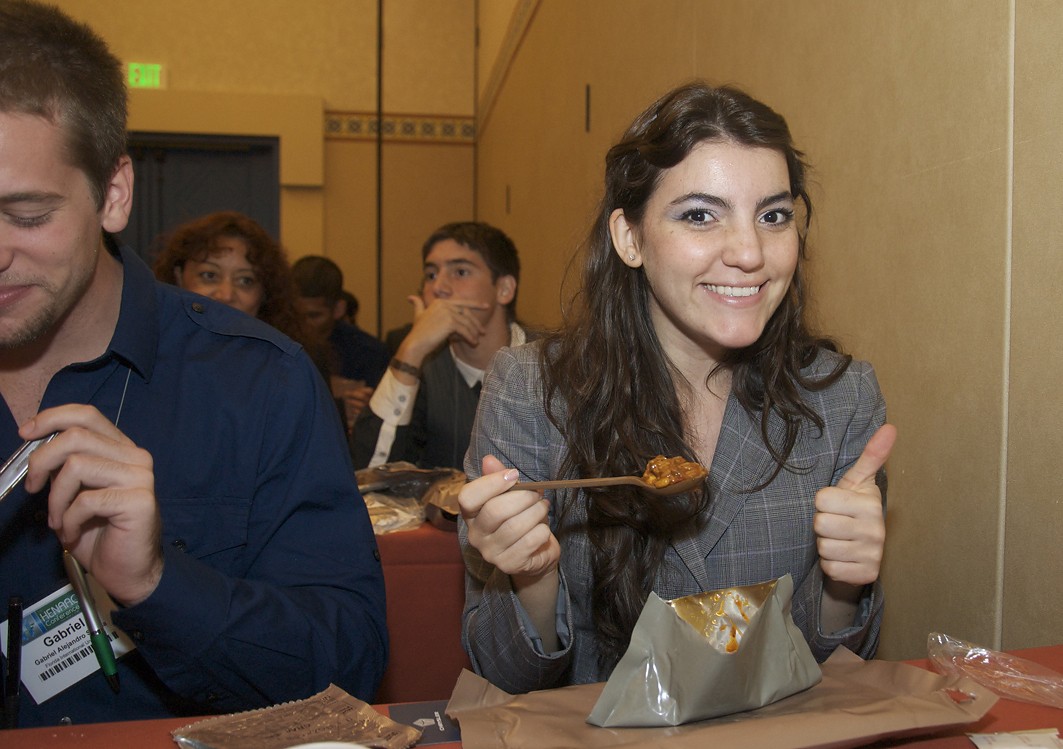ORLANDO, Fla. -- College students interested in engineering careers crowded into a demonstration of Army food technology Oct. 8 at the Hispanic Engineer National Achievement Award Conference here.
With an in-depth explanation of the science and technology that goes into everything from food taste to the packaging, Army officials let students unwrap rations usually reserved for America's Warfighters.
"We have the most awesome responsibility of refueling our most important combat asset -- the American Warfighter," said Gerald Darsch, Department of Defense Combat Feeding director from the Army's Natick Soldier Research, Development and Engineering Center in Massachusetts.
Darsch and executive assistant Kathy-Lynn Evangelos told students how rations have evolved through extensive research.
"Our research process covers the entire spectrum from physical and biological sciences to engineering, materials and behavioral science," Evangelos said. "Our food needs to have a certain shelf life, be air droppable, and meet stringent caloric and nutritional density requirements. We found that to get universal acceptance we need to consider things like menu monotony and taste."
More than 3,000 aspiring engineering students seeking opportunities with industry or government attended the annual HENAAC event Oct 7-9. The U.S. Army Research, Development and Engineering Command had a team of recruiters on-hand looking for potential civilian engineers.
The combat feeding demonstration gave attendees first-hand looks at the technology civilian researchers are developing for today's Soldier.
As Darsch and Evangelos introduced the food packet to the students, they asked them to open a heating bag and pour in a little water. Within seconds, steam rose from the bag and the food started to heat.
The chemical reaction used to heat the rations raised a lot of eyebrows in the room.
Marilen Natalia Costarelli from Florida International University tentatively smelled the serving heated in front of her. After one bite, she gave the meal a thumbs up.
"It's better than I expected," she said, as she finished the entire meal.
"That's the kind of feedback we like to hear," Darsch said. "We talk to Warfighters for this kind of input with every development. You can throw all kinds of science, technology and advanced development into combat feeding systems, but if you can't pass a taste test, what's the result' Feedback is critical."


Social Sharing